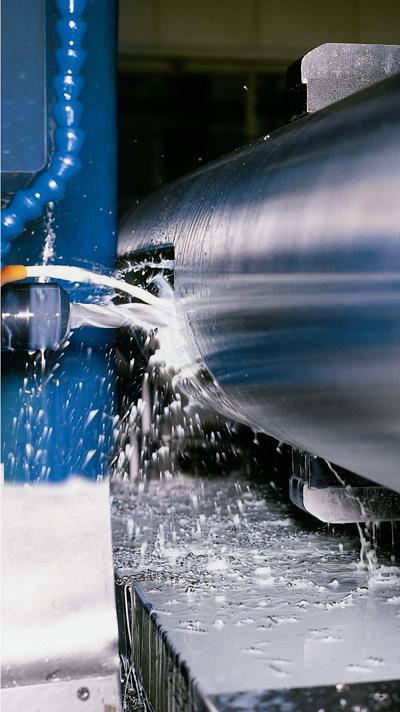
Blaser Swisslube Inc. has announced the release of Vasco 7000. Vasco 7000 is a third-generation water miscible, bio-based semisynthetic emulsion formulated with the latest metalworking fluid components for the aerospace industry. Vasco emulsions are sustainable and are registered for use under the USDA BioPreferred Program.
Vasco 7000 exhibits excellent biological and chemical stability, providing long sump life in demanding conditions without the use of secondary amines, boron and formaldehyde releasing condensates, according to the company. Vasco 7000 is Chlorine free and provides high cutting performance, increased productivity and long tool life for exotic alloys. Vasco 7000 has been formulated and optimized for high speed milling of Titanium and nickel based alloys, and is universally applicable over a wide range of materials and machining operations.
Vasco 7000 has excellent washing action and very low misting properties, thus providing a high level of machine and shop cleanliness. Vasco 7000 is formulated for use in hard or soft water conditions and provides good foam control in moderate to high coolant pressure applications.
Contact Details
Related Glossary Terms
- alloys
alloys
Substances having metallic properties and being composed of two or more chemical elements of which at least one is a metal.
- coolant
coolant
Fluid that reduces temperature buildup at the tool/workpiece interface during machining. Normally takes the form of a liquid such as soluble or chemical mixtures (semisynthetic, synthetic) but can be pressurized air or other gas. Because of water’s ability to absorb great quantities of heat, it is widely used as a coolant and vehicle for various cutting compounds, with the water-to-compound ratio varying with the machining task. See cutting fluid; semisynthetic cutting fluid; soluble-oil cutting fluid; synthetic cutting fluid.
- emulsion
emulsion
Suspension of one liquid in another, such as oil in water.
- gang cutting ( milling)
gang cutting ( milling)
Machining with several cutters mounted on a single arbor, generally for simultaneous cutting.
- metalworking
metalworking
Any manufacturing process in which metal is processed or machined such that the workpiece is given a new shape. Broadly defined, the term includes processes such as design and layout, heat-treating, material handling and inspection.
- milling
milling
Machining operation in which metal or other material is removed by applying power to a rotating cutter. In vertical milling, the cutting tool is mounted vertically on the spindle. In horizontal milling, the cutting tool is mounted horizontally, either directly on the spindle or on an arbor. Horizontal milling is further broken down into conventional milling, where the cutter rotates opposite the direction of feed, or “up” into the workpiece; and climb milling, where the cutter rotates in the direction of feed, or “down” into the workpiece. Milling operations include plane or surface milling, endmilling, facemilling, angle milling, form milling and profiling.

